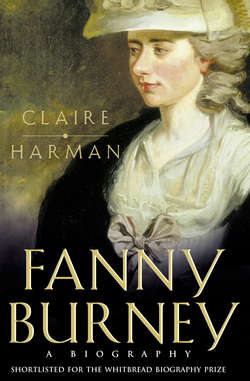Читать книгу Fanny Burney: A biography - Claire Harman, Claire Harman - Страница 7
A Note on Nomenclature
ОглавлениеNames and problems of identity are centrally important in all Fanny Burney’s novels, which makes it rather ironic that the name of the author herself has become a contentious issue. None of her novels revealed her name on the title page – her first novel did not even sport the conventional tag ‘By a Lady’, and the subsequent ones were attributed to ‘the author of Evelina’, etc. Memoirs of Doctor Burney ‘by his Daughter, Madame d’Arblay’, was the only work she signed in her lifetime. Her diaries, published posthumously, were attributed to ‘Madame d’Arblay’ until the publication in 1889 of the Early Diary, which introduced her baptismal name ‘Frances Burney’. ‘Fanny Burney’, the name by which she was known familiarly until her marriage in 1793 and to the world through Johnsoniana, was adopted in the title of Austin Dobson’s 1903 biography and was used extensively by critics and biographers during the twentieth century, including the eminent Burney scholar, biographer and editor Joyce Hemlow. This is the name under which the Burney Project is publishing her Journals and Letters and Early Journals and Letters even though a number of critics, notably and most eloquently Margaret Anne Doody, have been arguing since the 1980s that the diminutive is a patronising form which should no longer be tolerated. ‘It makes the author sound the harmless, childish, priggish girl-woman that many critics want her to be’, Doody has written. ‘Let her have an adult full name’.20
But which ‘adult full name’? It comes in many forms, making the search for material in catalogues and indexes peculiarly time-consuming. She is variously listed under A [Arblay], B [Burney] and D [d’Arblay], sometimes, as in the London Library, under all three. As preparations are made to raise a memorial to the author in Westminster Abbey, an ardent debate is taking place among members of the Burney Society on both sides of the Atlantic as to which name will appear, with the threat of an absurd compromise: ‘Frances (Fanny) Burney d’Arblay’.21 Bibliographical convention would dictate the use of her name at death, Frances d’Arblay, but no one seems happy with that; it is unfamiliar. Similarly, though ‘Frances Burney’ is used on the title pages of several modern reprints of her novels, ‘correctness’ rarely extends as far as the cover, where the author is most often still known as ‘Fanny Burney’, presumably because it is more recognisable to the reading public.
I have decided to use the latter style (interspersed with her married name in the later part of her life), despite the danger of appearing overfamiliar. In a work of criticism, I feel that the more formal ‘Burney’ or ‘Frances Burney’ would be correct throughout; in a biography, that deals with a subject from earliest childhood, the informal name is often more appropriate. I have also used familiar versions of some names within the Burney family which are subject to confusion through multiple use; to distinguish between Fanny’s mother and sister I have called the first Esther and second Hetty, and have used the familiar shortening of Susanna Burney’s name to Susan and Frederica Locke’s to Fredy on the grounds that they were Fanny Burney’s intimates. Her father is called Charles Burney (Dr Burney after 1769), her brother Charles Burney Junior (although he too gained a doctorate in 1808). Her husband is referred to as d’Arblay or M. d’Arblay, and their son, who was given the anglicised form of his father’s Christian name, as Alex.
